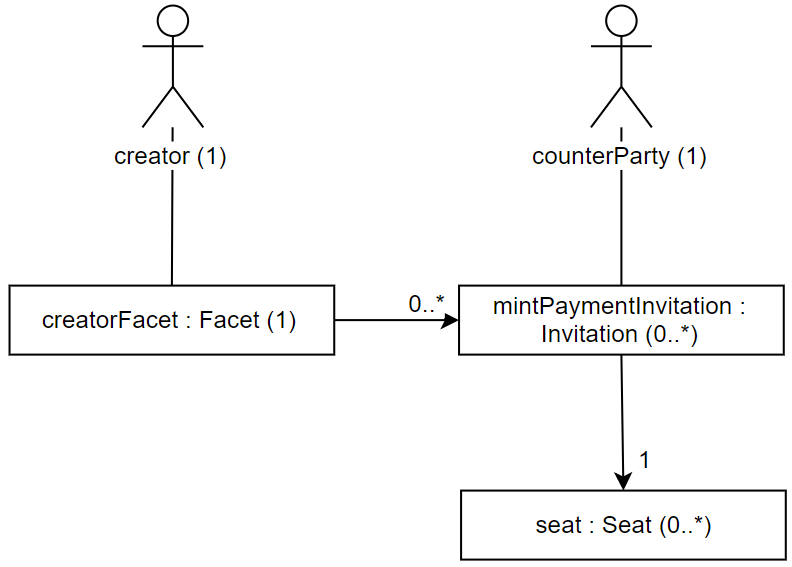The dependent participation pattern
Intent
Giving the creator the right to create an arbitrary amount of invitations, which it can share with potential counter parties.
Consequences
- The counterparty can only obtain an invitation if the creator explicitly gives an invitation to the counterparty. The counterparty is therefore dependent on the creator to get invitations.
- One instance of the smart contract guarantees an arbitrary amount of trades.
- The creator gets to choose the counter parties that it will trade with.
Structure
Participants
- Creator: the entity that starts an instance of the smart contract.
- Counterparty: the entity that wants to trade with the creator.
Implementation
const start = zcf => {
const offerHandler = seat => {
//...
};
const creatorFacet = Far('creatorFacet', {
makeInvitation: () => zcf.makeInvitation(offerHandler, 'description')
});
return harden({ creatorFacet });
};
harden(start);
export { start };
The smart contract returns a creatorFacet with a method
makeInvitation. This allows the creator to create an arbitrary amount
of invitations.
Known uses
- The mint payments smart contract.
- The Over The Counter desk smart contract.
- The priced call spread smart contract.
- The second-price auction smart contract.
- The escrow to vote smart contract.
Note that, although the sell items smart contract does return a
creatorFacet with a makeBuyerInvitation method, it is not included
in the list of known uses. This is because both the publicFacet and
the creatorFacet offer this makeBuyerInvitation method: there is
thus no guarantee that the creator gets to choose the counter parties
that it will trade with.
Related patterns
- The independent participation pattern: this pattern is nearly
identical to the dependent participation pattern. The difference is
that in the independent participation pattern, the
makeInvitationmethod is provided in thepublicFacetand not thecreatorFacet. This means that the counterparty does not depend on the creator to receive invitations. - The bilateral trade pattern: in this pattern, the counterparty is also dependent on the creator. The difference is that in the bilateral trade pattern, one instance of the smart contract guarantees exactly one trade, while in the dependent participation pattern one instance of the smart contract guarantees an arbitrary amount of trades.
